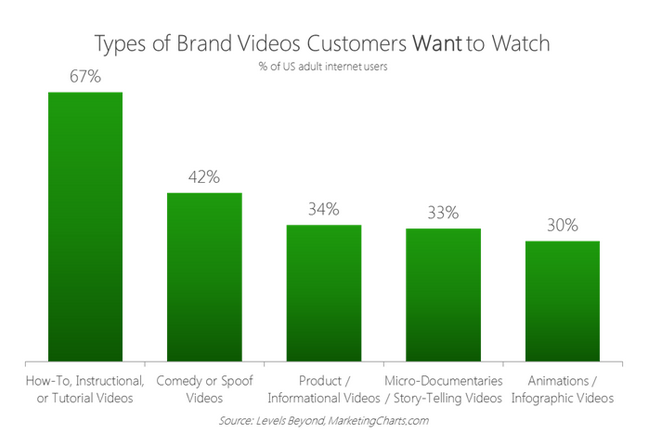- Communications
The Secrets To Making Videos Your Employees Will Actually Want To Watch
Gartner Research estimates that every employee in every organization spends 45 minutes each day watching work-related videos.
That reality has pushed many businesses to seriously consider not only how they host and stream all that video content, but also question something of a more fundamental nature:
What information, exactly, should our people spend all that time watching?
Of course, the final answer to that question will vary from organization to organization, as businesses prioritize their own top use cases — from scaling employee training and communications to newer concepts like video documentation, social learning, and more.
On the whole, however, video use is ramping up inside businesses around the world — according to Cisco, already 76% of executives watch business videos at least once a week. And as more workers spend more time viewing, many interesting early trends are being uncovered.
Recently, research teams at MIT and Levels Beyond have published new data on what’s popular and what works in business video, from the viewer’s perspective. Their findings provide excellent insights that can help you create a more valuable, more engaging video to share with your workplace.
So — what’s the best way to create a video that your employees will want to watch?
First, start with how you present your topic.
The subject of your video is ultimately the most important part of your recording — but remember, your subject doesn’t have to dictate your format.
Here’s what Levels Beyond found when they looked into the types of business videos people want to watch most.

The key takeaway is obvious — instructional videos are almost twice as popular as almost every other format, and 25 percentage points more popular than even comedy or spoof videos.
Simply put, for more engaging content, structure your video as a how-to tutorial.
Best of all, for many types of business videos, this requires just a few simple changes:
- Training Videos: Teach the concept by showing it in action. Role-play reenactments are an easy way to stage a lesson as part of a demonstration.
- Marketing Videos: Forget the generic brand videos. Get leads thinking about how they’ll use your products by sharing your new customer how-to demonstrations — with your marketing messages baked in, of course.
- Corporate Communications Videos: Don’t stop short! When announcing a new internal program or initiative, don’t just give the pitch and direct viewers to a website for more details — use a screen recorder to take them to the website and demonstrate signup, setup, and use.
- Onboarding Videos: New hires need to see a process in action multiple times to truly understand it in detail. A single demo isn’t enough — unless you record it so they can go back and watch it again and again as they get up to speed.
- Sales Enablement Videos: Embed the pitch in a demo! Prospects want to see the product or service in action — show them, while including details in transitional slides.
- Video Documentation: Stop writing — just click record on a screen recorder, your smartphone’s camera, or your Google Glass headset, and capture a real product walkthrough in full — with your commentary included.
Next, plan for your delivery.
Once you’ve found the right format for your business video, the next step to creating a really engaging recording is to adapt your delivery to meet the needs of your audience.
Once your team has recorded a few videos, you’ll be able to simply look to your video analytics data to get a sense for what makes a video popular, and what might lead people to shy away. As you begin building out your video library, however, you may want to tailor your recordings based on the advice of the team at MIT.
Researchers at MIT released a study of the viewing habits of more than 100,000 learners perusing over 6.9 million video sessions — and the findings offer an excellent guide for what viewers want in a business video.
The team recommends business videos be:
- Brief — viewers tend to click away after about six minutes.
- Informal — viewers preferred speakers seated at a desk, not standing behind a podium.
- Lively — viewers favored recordings filled with visuals and other videos, rather than static slides alone.
- Fast, with Pauses — viewers speakers who spoke 254 words a minute, but who also paused more often to allow people to take in visual information.
- Created for the Web — viewers preferred videos recorded specifically for online audiences, rather than existing videos broken up into chapters retroactively.
So what does an engaging business video look like in the real world?
A wealth of visual information — including the presenter, slides, additional video, and even an interactive test — created for online audiences and delivered in five minutes and forty-four seconds.
And in this case, produced with nothing more than Panopto, a laptop, and a standard webcam.
Try Panopto For Yourself!
Panopto makes it easy for anyone, anywhere to record and share business videos. Panopto runs on any laptop, enables presenters to record multiple video sources simultaneously, and handles all the technical AV details automatically.
To see how Panopto can help your organization create great business videos with ease, contact our team for a free trial today.




